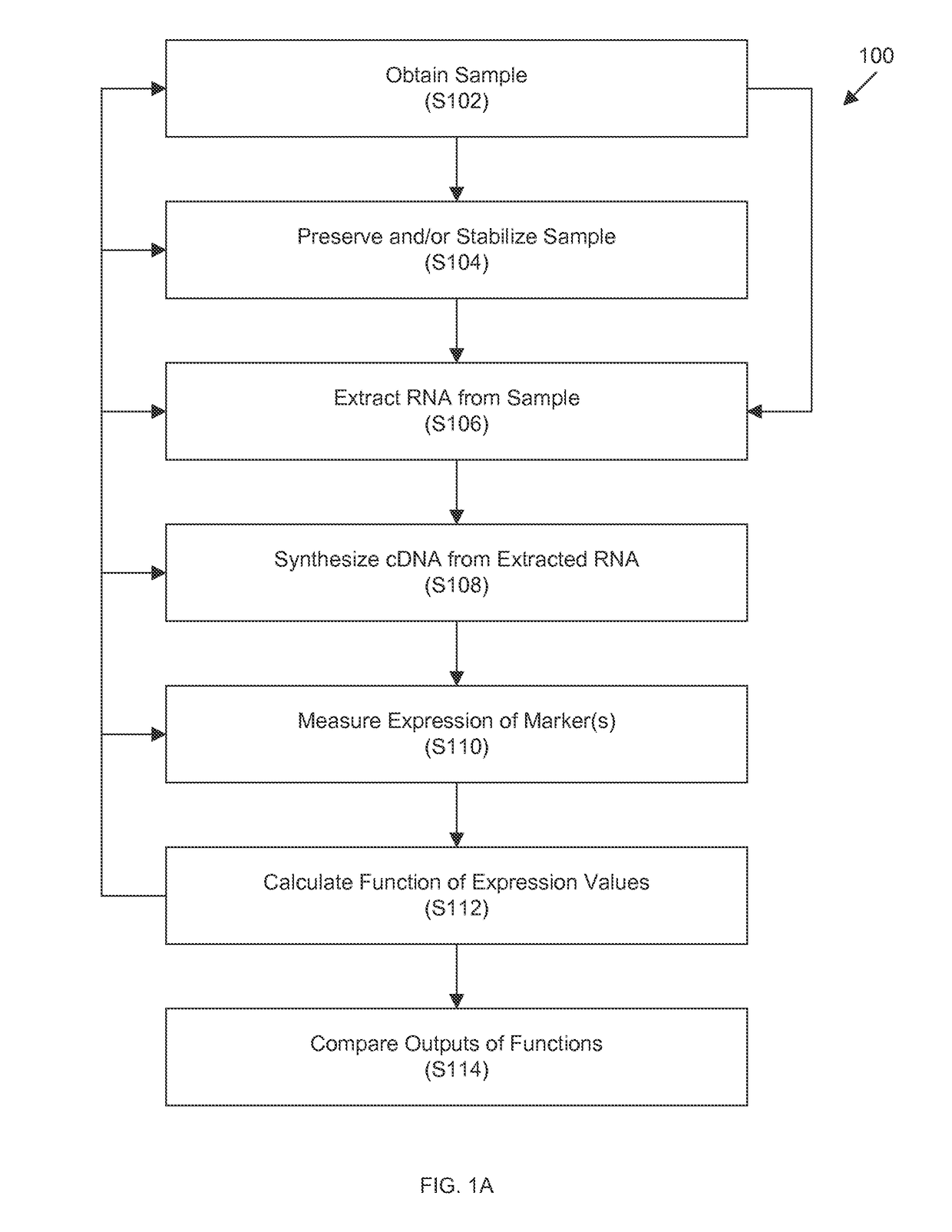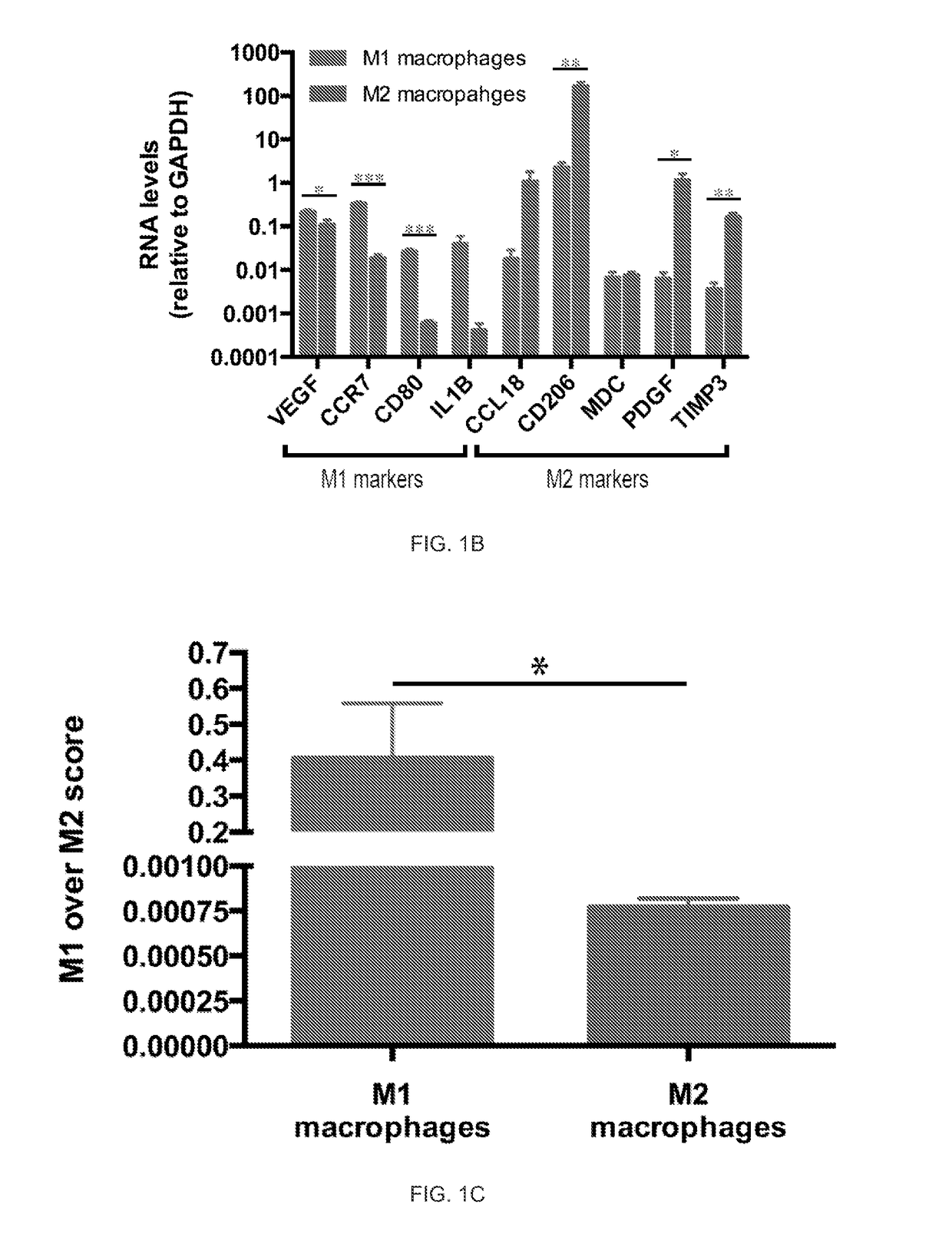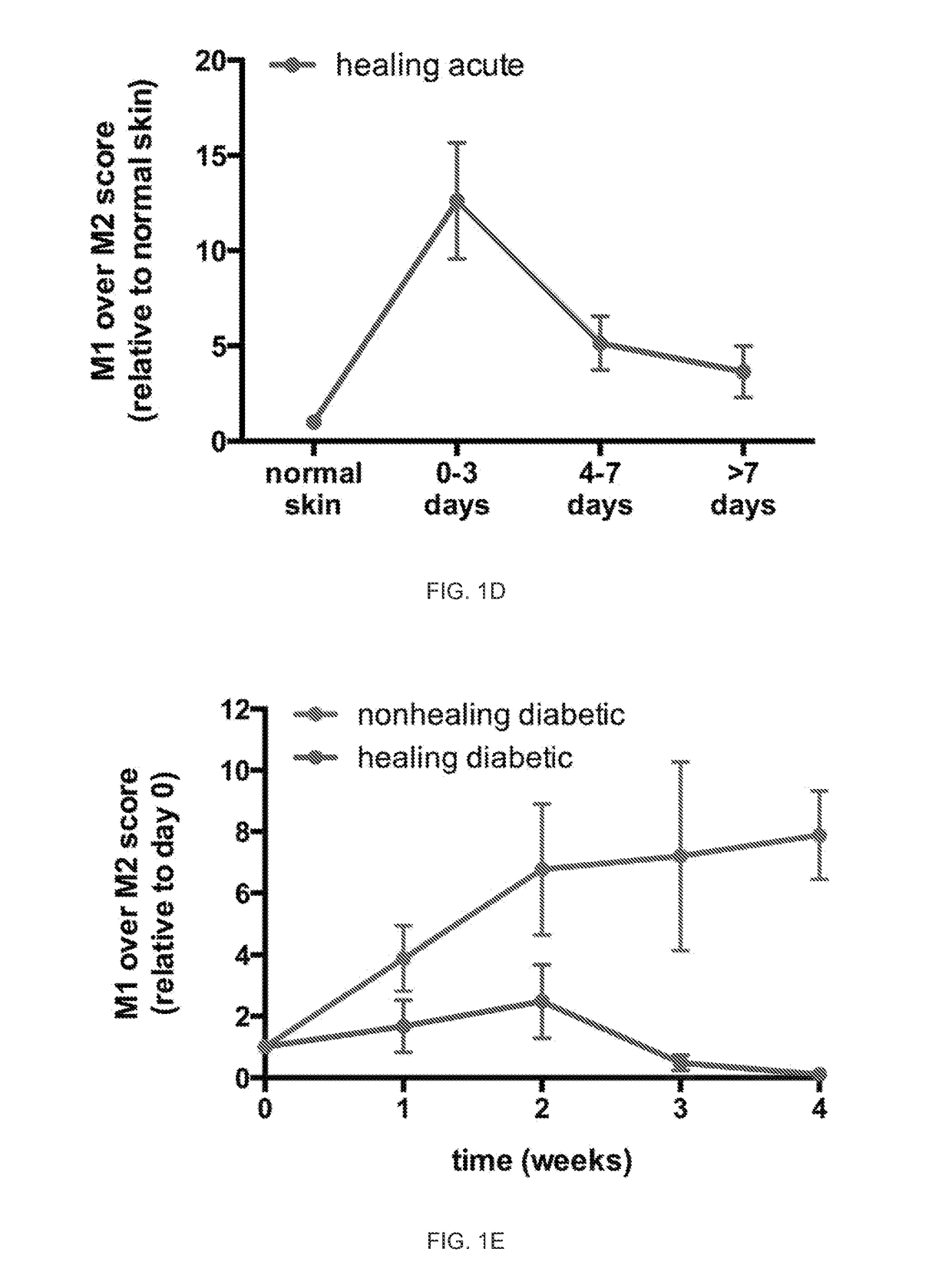Methods, computer-readable media, and systems for assessing samples and wounds, predicting whether a wound will heal, and monitoring effectiveness of a treatment
a technology of computer-readable media and systems, applied in biochemistry apparatus and processes, instruments, peptide/protein ingredients, etc., can solve the problems of 82,000 lower limb amputations annually, direct cost of $5 billion per year, complex process of wound healing, etc., and achieve the effect of monitoring the effectiveness of a treatmen
- Summary
- Abstract
- Description
- Claims
- Application Information
AI Technical Summary
Benefits of technology
Problems solved by technology
Method used
Image
Examples
working examples
Materials and Methods
Experimental Design
[0142]A panel of genes were selected that were highly indicative of macrophage phenotype using macrophages cultivated and polarized in vitro towards the M1 and M2 phenotypes. Next, a number of algorithms for converting expression data of 10 different genes into a combinatorial score were evaluated. These algorithms were applied to debrided wound tissue obtained from human diabetic foot ulcers over the course of 30 days from the initial visit in order to describe differences in macrophage behavior between healing and nonhealing diabetic wounds and in comparison to healing acute wounds. A publicly available dataset from a longitudinal study of wound healing in acute burn wounds in humans provided in Greco was used as the healing acute wound data.
Preparation and Characterization of Polarized Macrophages in Vitro
[0143]Freshly isolated primary monocytes, purified via negative selection from human peripheral blood mononuclear cells, were purchased f...
PUM
 Login to View More
Login to View More Abstract
Description
Claims
Application Information
 Login to View More
Login to View More - R&D Engineer
- R&D Manager
- IP Professional
- Industry Leading Data Capabilities
- Powerful AI technology
- Patent DNA Extraction
Browse by: Latest US Patents, China's latest patents, Technical Efficacy Thesaurus, Application Domain, Technology Topic, Popular Technical Reports.
© 2024 PatSnap. All rights reserved.Legal|Privacy policy|Modern Slavery Act Transparency Statement|Sitemap|About US| Contact US: help@patsnap.com










